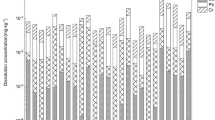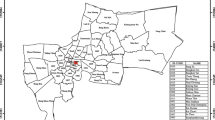Abstract
Non-invasive collection of biological sample such as sweat, urine, saliva, hairs and, stool and onsite detection of anlaytes in those samples is an interesting and viable approach for rapid screening of various toxicants in body. Environmental exposure/presence of lead (82Pb) and its rapid detection provide one such opportunity. A chemical spot based colorimetric method and a transdermal patch device based on this spot test, is developed for rapid and qualitative assessment of inorganic lead (Pb2+) in non-coloured biological or environmental liquid samples. The transdermal patch system contains two important parts, a chemical spot prepared on a thin glass sheet and, an absorbent paper (11 µm pore size). A one step colour development reaction is able to identify the presence or absence of Pb2+. In-vitro evaluation for sensitivity and cut-off value determination, within run and between run precision testing, specificity testing were done. In-vivo evaluation of the developed patch system was performed in occupationally lead-exposed subjects and in control volunteers. In-vivo field testing results were further validated with gold standard test for lead detection. Blood lead levels and patch lead levels were found to be positively correlated (r = 0.57, P < 0.0001). In addition, the sensitivity and specificity of device in identification of Pb2+ was found to be 75.93% (95% CI = 62.36%—86.51%) and 95.24% (95% CI = 76.18%—99.88%). The developed system appears as a reliable, non-invasive rapid test with minimum step involve for identification of Pb2+ in a given system.



Similar content being viewed by others
Availability of data and material
All the research data related to this manuscript will be available upon reasonable request to the corresponding authors.
References
H. Abadin, A. Ashizawa, Y.W. Stevens, F. Llados, G. Diamond, G. Sage, M. Citra, A. Quinones, S.J. Bosch, S.G. Swarts, Toxicological Profile for Lead. Atlanta (GA): Agency for Toxic Substances and Disease Registry (US); PMID: 24049859. (2007)
L.R. Brown, E. Edelman, D. Tseng, Non-invasive transdermal detection of analytes. US patent US6492180B2 (2002)
E.J. Cone, M.J. Hillsgrove, A.J. Jenkins, R.M. Keenan, W.D. Darwin, J. Anal. Toxicol. 18(6), 298–305 (1994). https://doi.org/10.1093/jat/18.6.298
T.E Conn, R. Ford, P.L. Soni, M.J. Tierney, P. Vijayakumar, Collection assemblies for transdermal sampling system. PCT patent No. WO1999058190A1, (1999)
Centers for Disease Control and Prevention. Morbidity and mortality weekly report 60(25):841–845 (2011)
J. Cullen, Lead indicator spray. USA Patent US 9.213,022 B1 (2005)
L. Durai, S. Badhulika, Mater. Sci. Eng., C 112, 110865 (2020). https://doi.org/10.1016/j.msec.2020.110865
L. Durai, A. Gopalakrishnan, S. Badhulika, J. Electroanal. Chem. 861, 113937 (2020). https://doi.org/10.1016/j.jelechem.2020.113937
S. Emaminejad, W. Gao, E. Wu, Z.A. Davies, H.Y.Y. Nyein, S. Challa, S.P. Ryan, H.M. Fahad, K. Chen, Z. Shahpar, Proc. Natl. Acad. Sci. 114(18), 4625–4630 (2017). https://doi.org/10.1073/pnas.1701740114
J. Emsley, Nature’s Building Blocks: An A-Z Guide to the Elements (Oxford University Press, 2011)
E.J. Esswein, K. Boeniger, K. Ashley, Handwipe disclosing method for the presence of lead. US patent US6248593B1 (2001)
A. Fischbein, H. Hu, Environmental and occupational exposures. In: Rom WN (ed) Environmental and Occupational Medicine. 4th ed. edn. Lippincott Williams and Wilkins, Philadelphia, USA, 954–990 (2007)
S.J. Genuis, D. Birkholz, I. Rodushkin, S. Beesoon, Blood, Urine, and Sweat (BUS) Study: Monitoring and Elimination of Bioaccumulated Toxic Elements. Arch. Environ. Contam. Toxicol. 61(2), 344–357 (2011). https://doi.org/10.1007/s00244-010-9611-5
J. Jacobson, J. Swanepoel, K. Wong, Association of Toolmark and Firearm Examiners 42(1), 49–55 (2010)
P. Kintz, A. Tracqui, P. Mangin, Y. Edel, J. Anal. Toxicol. 20(6), 393–397 (1996). https://doi.org/10.1093/jat/20.6.393
R.A. Koster, J.W.C. Alffenaar, B. Greijdanus, J.E. VanDerNagel, D.R. Uges, Ther. Drug Monit. 36(1):35–45 (2014). https://doi.org/10.1097/FTD.0b013e3182a04feb
C.-L. Li, K.-T. Liu, Y.-W. Lin, H.-T. Chang, Anal. Chem. 83(1), 225–230 (2011). https://doi.org/10.1021/ac1028787
S.G. Lilley, T.M. Florence, J. Stauber, Sci. Total Environ. 76(2–3), 267–278 (1988). https://doi.org/10.1016/0048-9697(88)90112-X
R.G. Newcombe, D.G. Altman, Proportions and their differences. In Altman DG, Machin D, Bryant T, Gardner M (eds) Statistics with Confidence: Confidence Intervals and Statistical Guidelines. 2nd ed. BMJ books, 45-56 (2000)
F.O. Omokhodion, G.W. Crockford, Sci. Total Environ. 103(2), 113–122 (1991). https://doi.org/10.1016/0048-9697(91)90137-4
J.A. Pinto, A.S. McAnally, J.R. Flora, J Environ Sci Health Part A 32(1), 31–53 (1997). https://doi.org/10.1080/10934529709376526
M.R. Prausnitz, R. Langer, Nat. Biotechnol. 26(11), 1261–1268 (2008). https://doi.org/10.1038/nbt.1504
S. Schneider, Z. Ait-M-Bark, C. Schummer, P. Lemmer, M. Yegles, B. Appenzeller, R. Wennig, J. Anal. Toxicol. 32(3), 260–264 (2008). https://doi.org/10.1093/jat/32.3.260
D.W. Schoendorfer, W.R. Miller, Method and apparatus for determination of chemical species in body fluid. United States Patent US5076273A (1991)
U.S. Department of Health and Human Services, NTP monograph on health effects of low-level lead. Washington D.C. Jun;(1):xiii, xv-148 (2012)
J. Sheng, W. Qiu, B. Xu, H. Xu, C. Tang, Environ. Sci. Pollut. Res. 23(11), 11034–11045 (2016). https://doi.org/10.1007/s11356-016-6287-z
J.L. Stauber, T.M. Florence, The Science of the Total Environment 74, 235–247 (1988). https://doi.org/10.1016/0048-9697(88)90140-4
M.J. Stone, Test swab device and method of detecting lead, mercury, arsenic, and bismuth. US patent, US5330917A (1994)
D. Vairo, L. Bruzzese, M. Marlinge, L. Fuster, N. Adjriou, N. Kipson, P. Brunet, J. Cautela, Y. Jammes, G. Mottola, Sci. Rep. 7(1), 1–7 (2017). https://doi.org/10.1038/s41598-017-12211-y
D.F. Waterhouse, Aust. J. Biol. Sci. 4(2), 144–162 (1951). https://doi.org/10.1071/BI9510144
Acknowledgements
Support from all the visited industrial units management and participants is highly acknowledged during the field-testing of the device. Technical assistance of Mr. Gajanan Pratap Patil is also acknowledged.
Funding
The study was supported by intramural funds to DPS by ICMR-National Institute of Occupational Health, Ahmedabad.
Author information
Authors and Affiliations
Contributions
Conceptualization: Dhirendra Pratap Singh and Kamalesh Sarkar, Resources: Kamalesh Sarkar, Mahendra Bishnoi, Data curation: Kamalesh Sarkar, Dhirendra Pratap Singh, Supervision, formal analysis, funding aquisition: Dhirendra Pratap Singh, Validation, Investigations, methodology: Dhirendra Pratap Singh, Mahendra Bishnoi, Kamalesh Sarkar, Writing original draft: Dhirendra Pratap Singh, Project administration: Kamalesh Sarkar, Dhirendra Pratap Singh, Writing, review and editing: All authors. All authors approve the final version of the manuscript for submission.
Corresponding author
Ethics declarations
Ethical approval
Field study (in-vivo validation) was approved by institutional human ethics committee of ICMR-NIOH, Ahmedabad (IEC2018/28/09/3.4).
Consent to participate
A written informed consent was acquired from all the study subjects for their voluntarily participation in the study.
Consent to publish
The written informed consent was acquired from every study subject, describing the fact that the findings can be published in scientific journals or in form of reports.
Conflict of interest
There are no financial conflicts among author to declare. An Indian patent and design application has been filed by KS and DPS based on this study.
Additional information
Publisher's Note
Springer Nature remains neutral with regard to jurisdictional claims in published maps and institutional affiliations.
Supplementary information
Below is the link to the electronic supplementary material.
Rights and permissions
About this article
Cite this article
Sarkar, K., Bishnoi, M. & Singh, D.P. Designing, fabrication and evaluation of a rapid, point-of-care and noninvasive system for the detection of lead (Pb2+). Biomed Microdevices 23, 56 (2021). https://doi.org/10.1007/s10544-021-00599-4
Accepted:
Published:
DOI: https://doi.org/10.1007/s10544-021-00599-4




